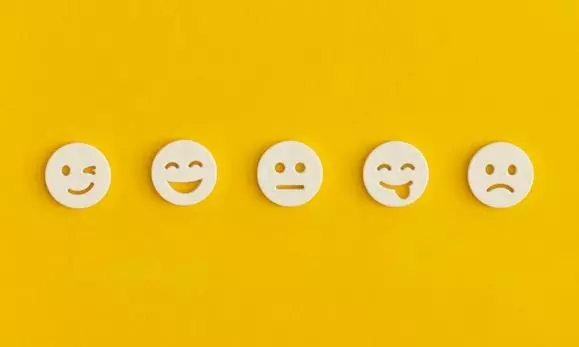
- Home
- India
- World
- Premium
- THE FEDERAL SPECIAL
- Analysis
- States
- Perspective
- Videos
- Sports
- Education
- Entertainment
- Elections
- Features
- Health
- Business
- Series
- In memoriam: Sheikh Mujibur Rahman
- Bishnoi's Men
- NEET TANGLE
- Economy Series
- Earth Day
- Kashmir’s Frozen Turbulence
- India@75
- The legend of Ramjanmabhoomi
- Liberalisation@30
- How to tame a dragon
- Celebrating biodiversity
- Farm Matters
- 50 days of solitude
- Bringing Migrants Home
- Budget 2020
- Jharkhand Votes
- The Federal Investigates
- The Federal Impact
- Vanishing Sand
- Gandhi @ 150
- Andhra Today
- Field report
- Operation Gulmarg
- Pandemic @1 Mn in India
- The Federal Year-End
- The Zero Year
- Science
- Brand studio
- Newsletter
- Elections 2024
- Events
- Home
- IndiaIndia
- World
- Analysis
- StatesStates
- PerspectivePerspective
- VideosVideos
- Sports
- Education
- Entertainment
- ElectionsElections
- Features
- Health
- BusinessBusiness
- Premium
- Loading...
Premium - Events

From Swiggy to Zomato to Flipkart, Indian brands are riding the emoji wave to connect with a diverse, digital-first generation across languages and regions
We talk and, of course, we make gestures when we do so. Yet, much of our daily conversation is based primarily on oral exchanges.
So, why do we need emojis when we text, and why has the use of emojis risen so drastically over the past few years?
To state the obvious, we use emojis only in written communication. This even as the inclination to read and write, especially among Gen Z and Gen Alpha (those born after 2010) is on the decline. So, when reading and writing are on the wane, why is emoji use zooming?
Unicode 17.0 says there are 3,953 emojis as of September 2025. These are found all over and across social media, mobile messaging, email marketing, push notifications, electronic messages, and web pages.
Studies about the reading habits of young people vary a great deal. Some studies suggest it is just 7 minutes, but other studies find it a lot more. It is no different with handwriting skills. A study shows 40 per cent of Gen Zers struggle to write by hand, but are quite adept at using social media.
Gesture replacements
Those who write about the increasing use of emojis say these texting tools express a lot more — and more succinctly — than words. That suggests emojis are being used as some sort of a communication shorthand.
That’s another way of saying emojis have replaced the gestures we use in interpersonal communication. The belief seems to be that if you can say it with an emoji, why use words?
Also read: World Emoji Day 2025: Meet the top, trendy emoticons of your mobile
To be sure, emojis imitate a range of human expressions, and perhaps more. Whether you wish to communicate joy or happiness, dislike or anger, you have an emoji.
Unicode 17.0 says there are 3,953 emojis as of September 2025. These are found all over and across social media, mobile messaging, email marketing, push notifications, electronic messages, and web pages.
Types of emojis
Based on the functions they serve, emojis are classified into three types. There are those that either complement or supplement the textual matter. For example, while typing 'Sunny’s apartment is close to the beach’, one can complement it with an emoji — 'Sunny’s apartment is close to the beach🏖️'. We can also supplement the text — 'Sunny’s apartment is close to the 🏖️'.
Also Read: Use of thumbs-up emoji lands Canadian man in trouble; court fines him Rs 51 lakh
The second classification is — facial 😄 or non-facial 👑emojis. The facial emojis are the most used, as they convey emotions. Non-facial emojis are used to semantically represent ‘objects, ideas, actions, and events.’
The third type are those that are symmetrical 😣or asymmetrical 🤪. The asymmetrical emojis are slightly tilted in one direction.
Game-changer for marketers
The greatest fillip to use emojis perhaps came from the marketing arms of certain types of businesses. They perhaps realised, well before anyone else, the implications of what and how the young generation behaves.
These marketers appear to have hit upon the novel idea of using emojis, especially digital icons, in the place of words, to engage with the youth in structured, systematic conversations.
It isn’t so much about why a business uses emojis; rather, it is often how the business using it is perceived to be.
The practice soon caught on the world over. In a country as diverse as India — where people speak 22 different languages and countless dialects — getting a message across is never easy. For marketers, it's a real challenge.
Also Read: Emoji Day 2022: What's the rolling eye, the wink, and the flying kiss?
How do you make sure your brand speaks to everyone, from Kashmir to Kanyakumari? Here, emojis proved to be a game-changer.
High opt-in rates
Messages with emojis saw high opt-in and open rates. In India, food delivery organisations made bold use of the digital icons. And the new generation simply lapped it up.
Brands such as Flipkart, Swiggy, and Zomato used food and shopping-related emojis to elicit feelings like hunger, excitement, or contentment. McDonald's did the same. It spread its message of 'happiness' and 'optimism' by including the smiling emoji on Happy Meal boxes.
Not to be left behind, Domino’s Pizza revolutionised convenience when it allowed consumers to send a pizza slice 🍕via chatbot, reducing the order time to a mere five seconds.
Positive impact
It isn’t so much about why a business uses emojis; rather, it is often how the business using it is perceived to be. Emojis make ads and social media posts more relatable, more human — and let’s be honest, way more fun. Think about it: a smiling face 😊, a heart ❤️, or even a fire emoji 🔥speak volumes without a single word.
Since there is little standardisation, emojis are open to varied interpretations. How will semi-literate, illiterate, or old people respond to something they are not familiar with?
An Adobe study published in 2022 informs us that 71 per cent of emoji users (sample size of 5,000) feel that people who use emojis in their communication are perceived as friendlier, and 60 per cent of them say that these playful pictographs can boost mental health.
If the Adobe results are anything to go by, using emojis not only allows marketers to appear young, approachable, and relevant, but they also affect the consumers’ well-being.
The flip side
Not everything is hunky-dory, though. Since there is little standardisation, emojis are open to varied interpretations. How will semi-literate, illiterate, or old people respond to something they are not familiar with?
Also read: WhatsApp rolls out Community feature; here is what you need to know
In 2023, a farmer in Canada learned his lesson the hard way. He had to shell out over C$80,000 because he used the thumbs up emoji to indicate his ‘agreement’ to supply flax to his buyer, which he could not meet. He later claimed the sign did not mean ‘agreement', but the court did not accept his contention.
So, while emojis can sometimes be misunderstood, especially without clear context, their ability to bridge language barriers and connect people emotionally makes them a powerful tool — one that, when used thoughtfully, can truly speak louder than words.
(The Federal seeks to present views and opinions from all sides of the spectrum. The information, ideas or opinions in the articles are of the authors and do not necessarily reflect the views of The Federal.)



